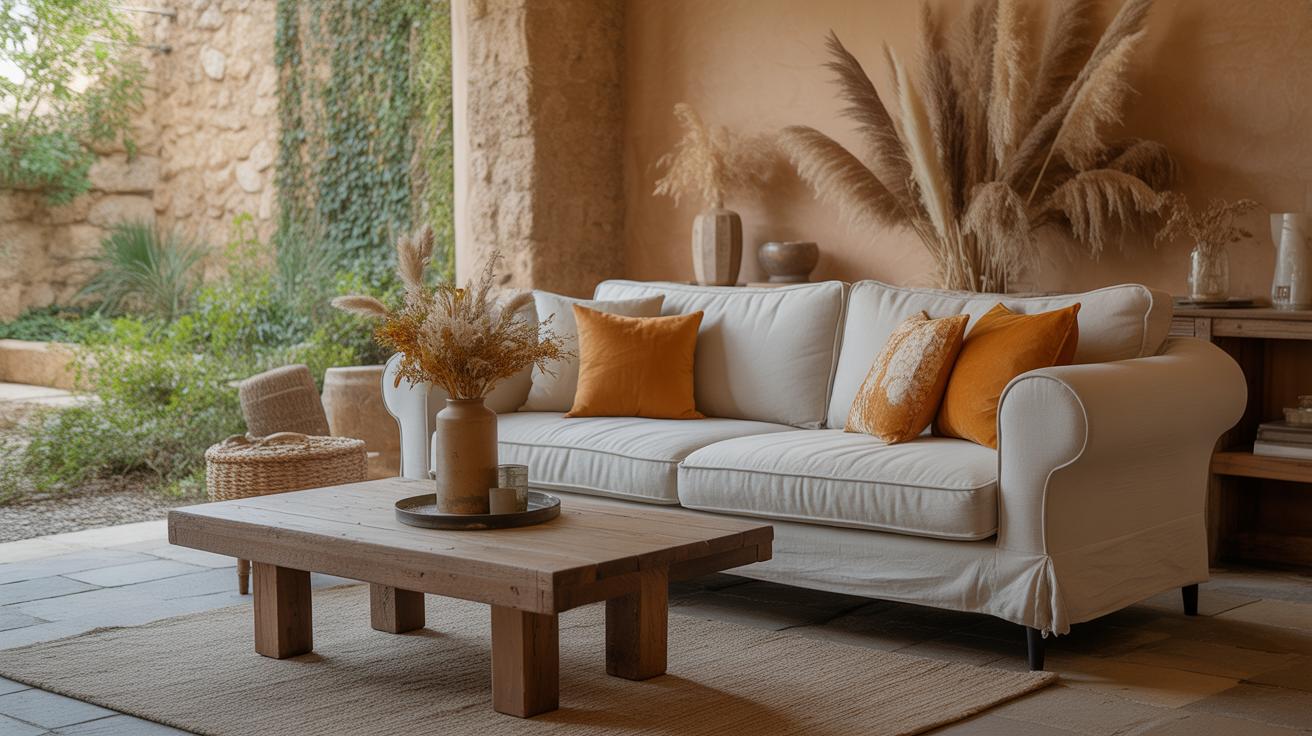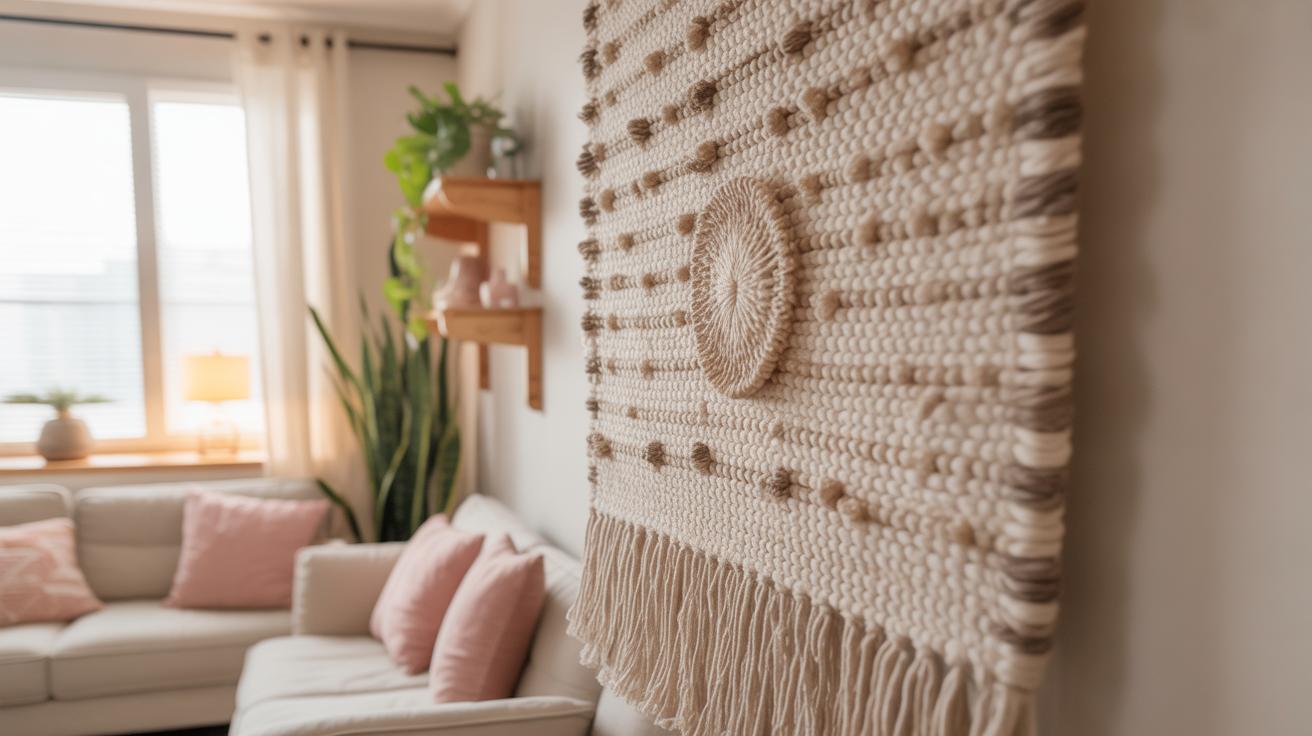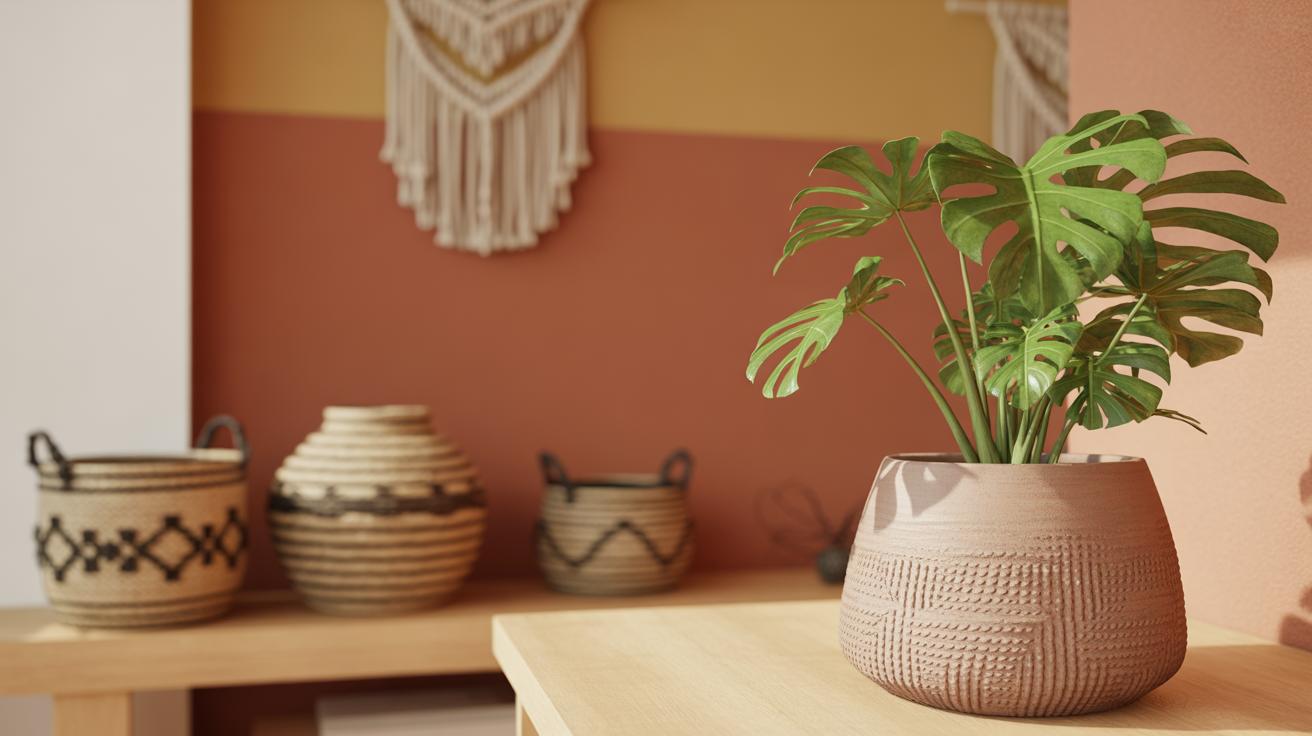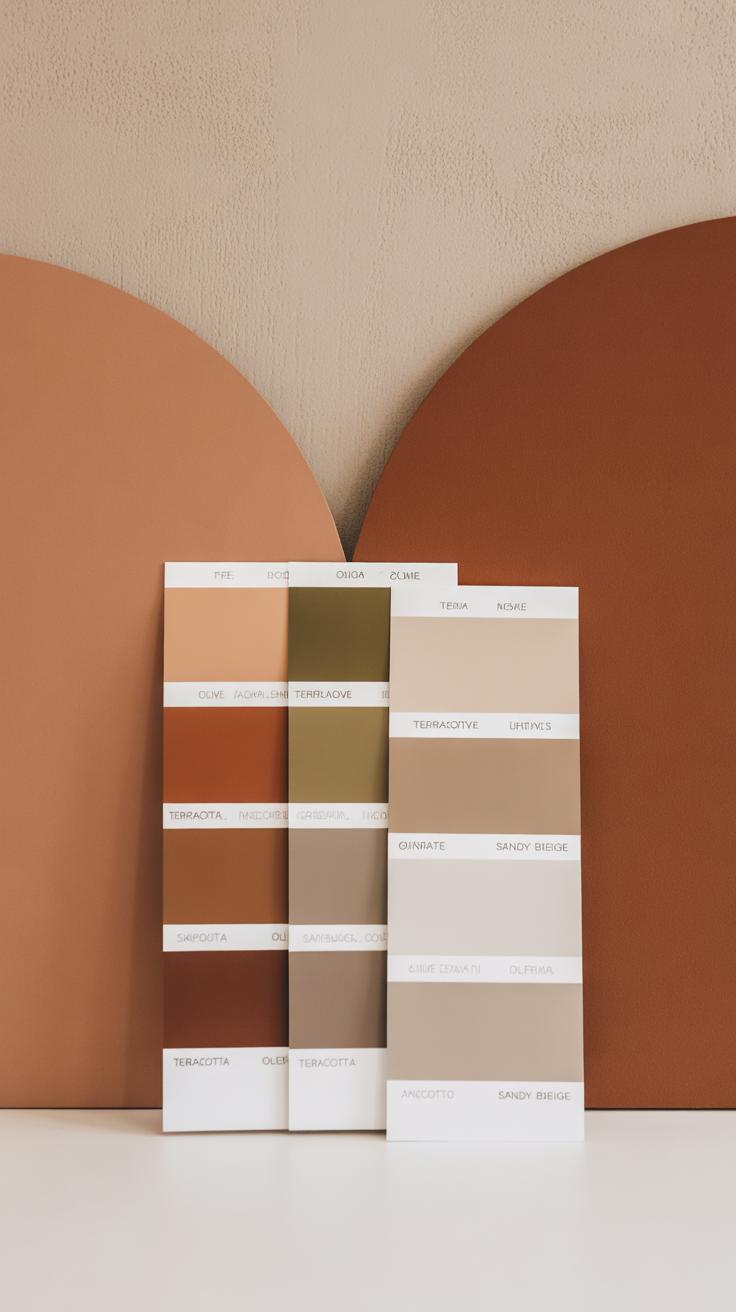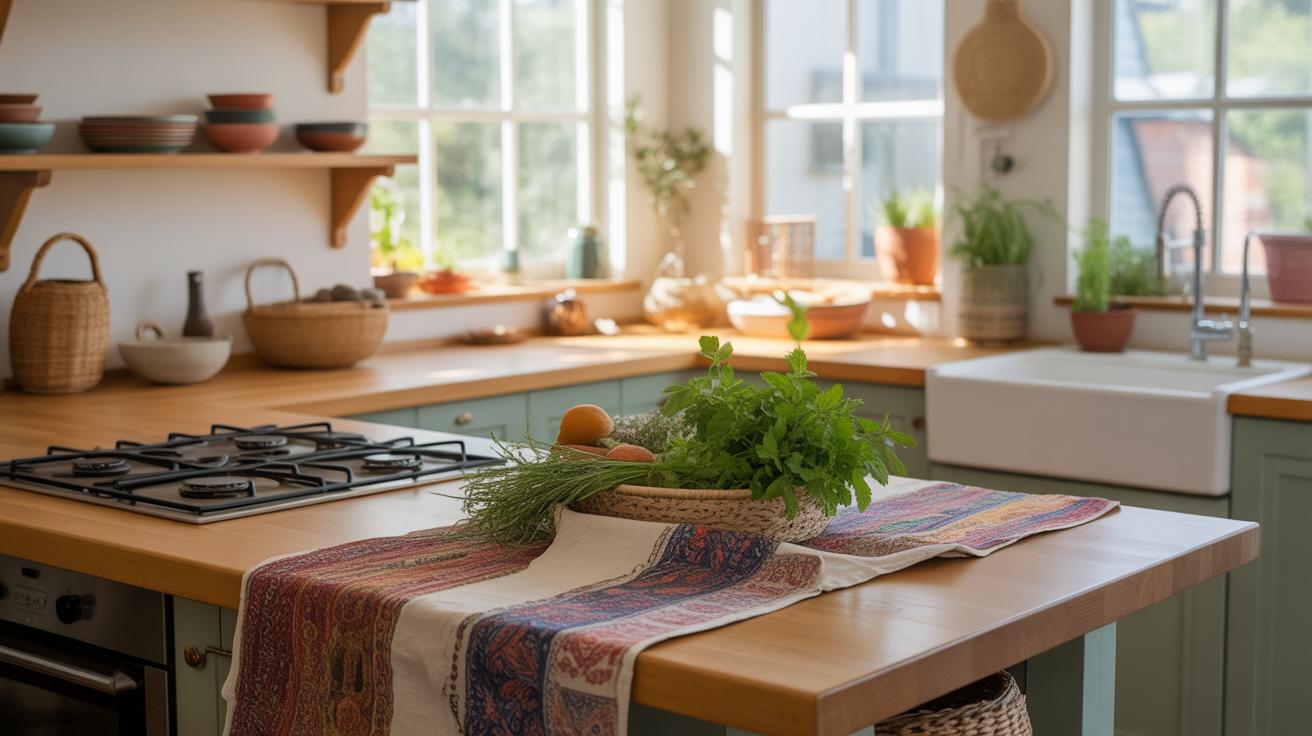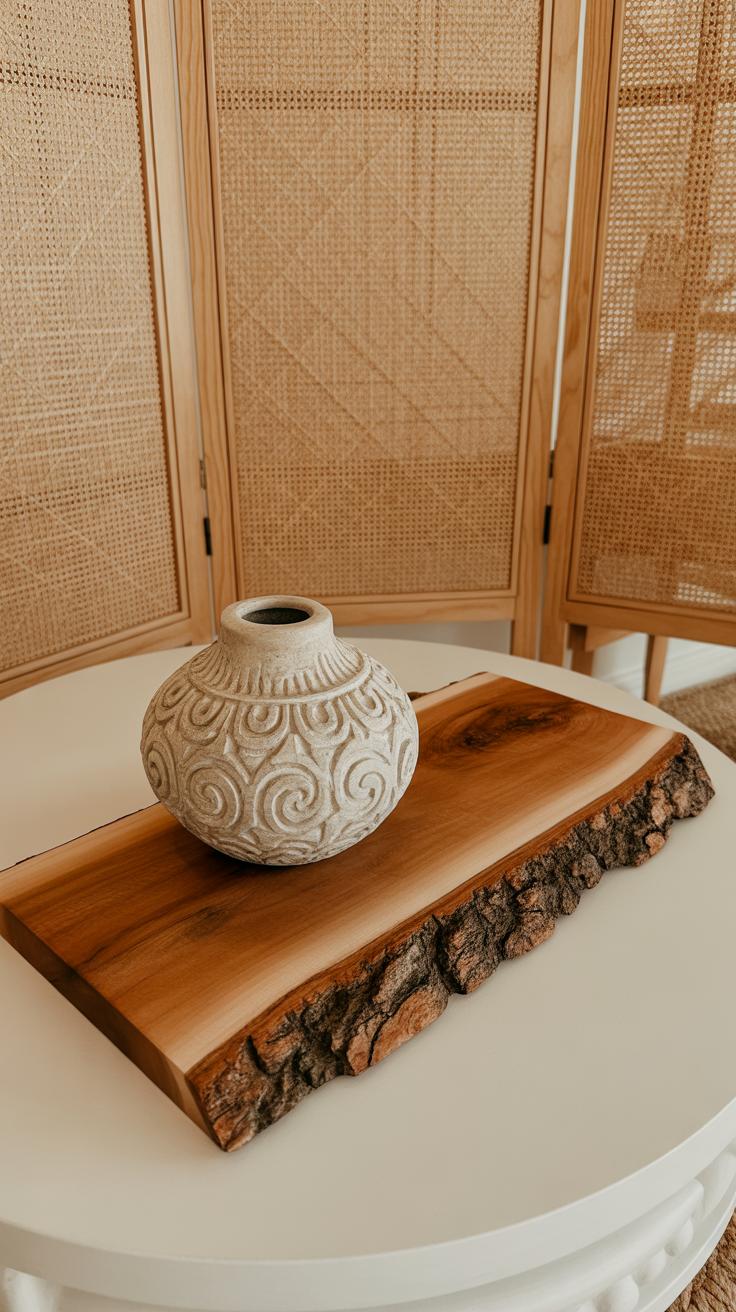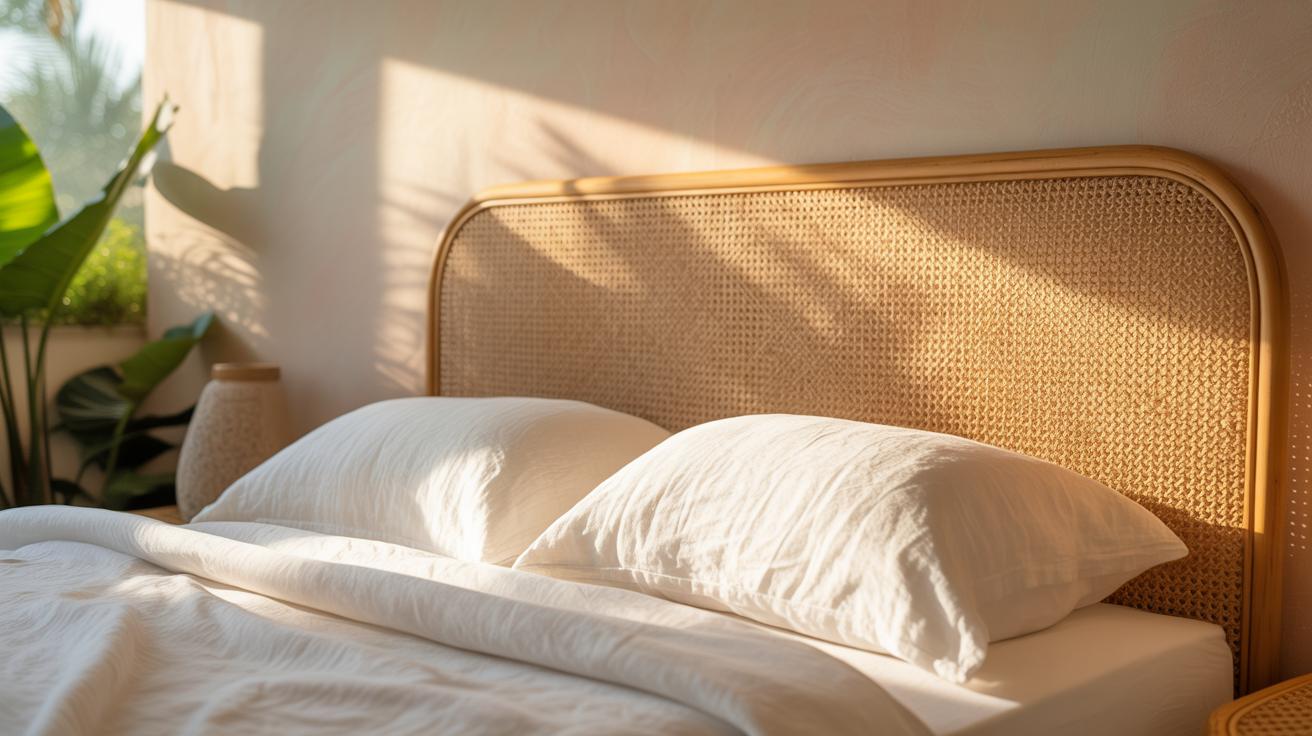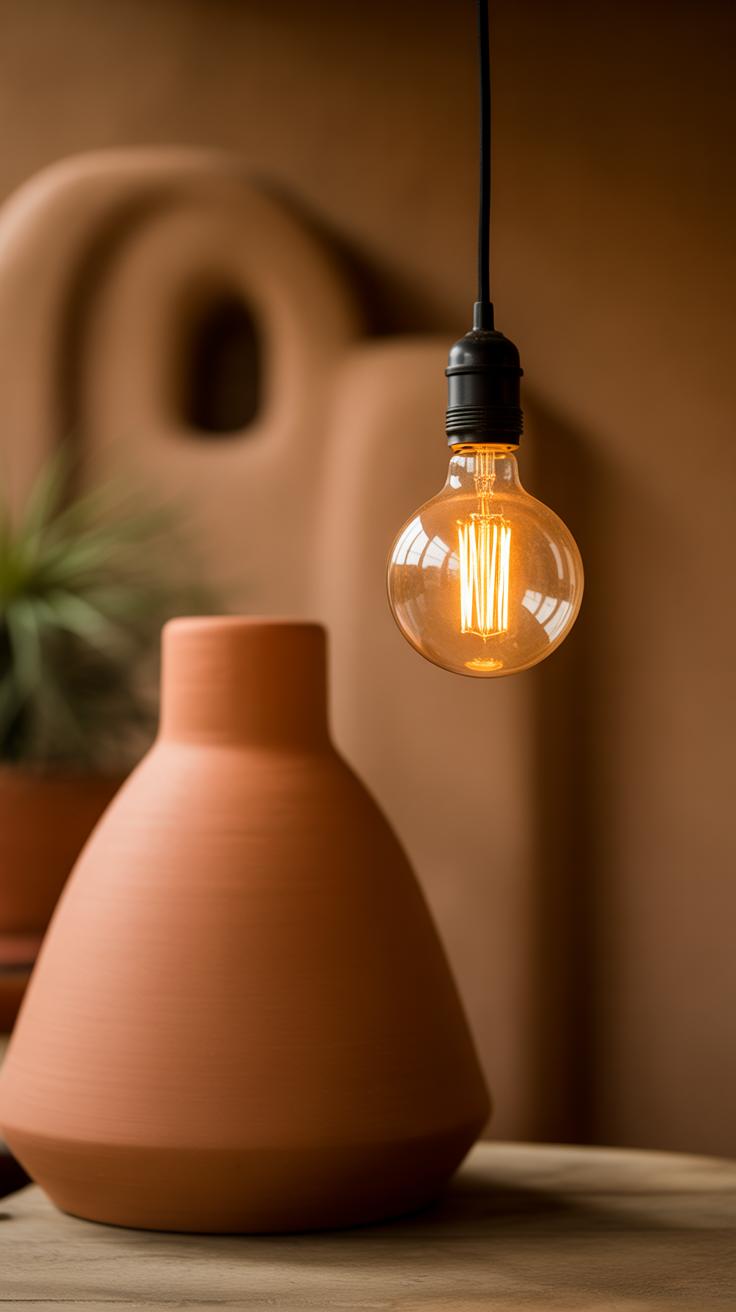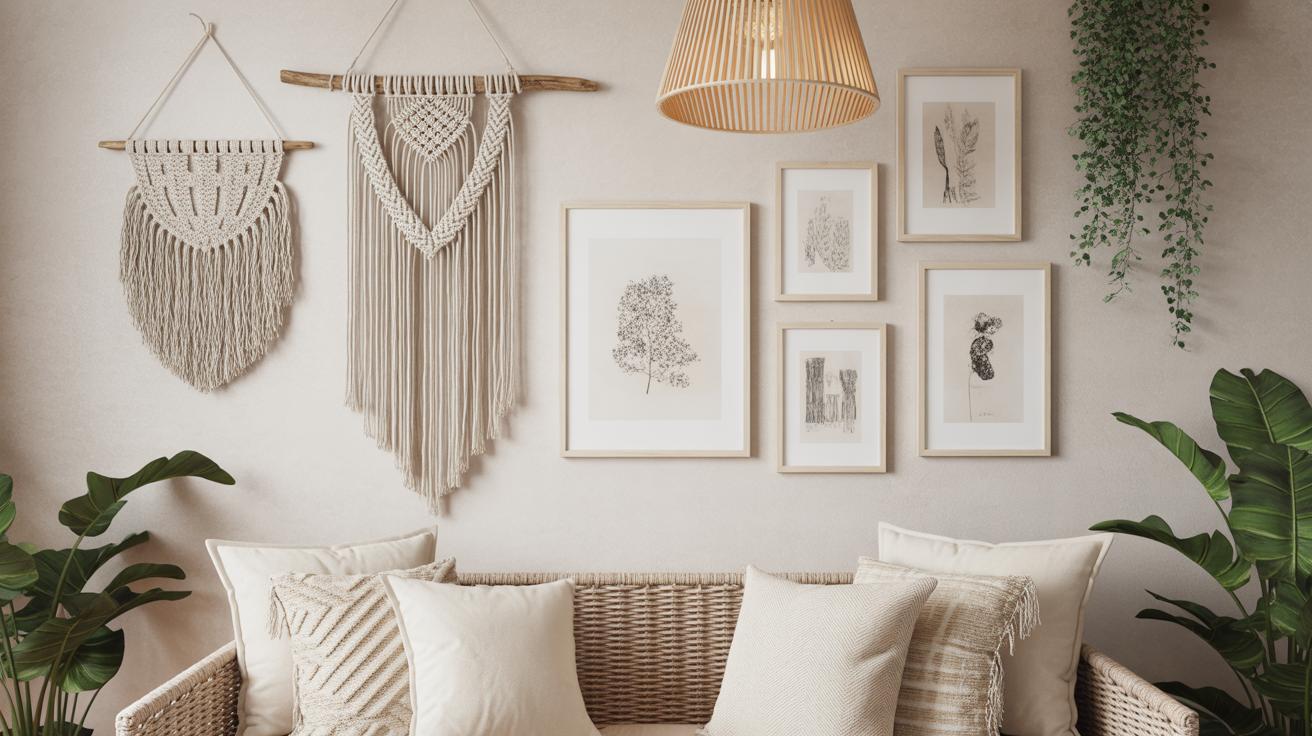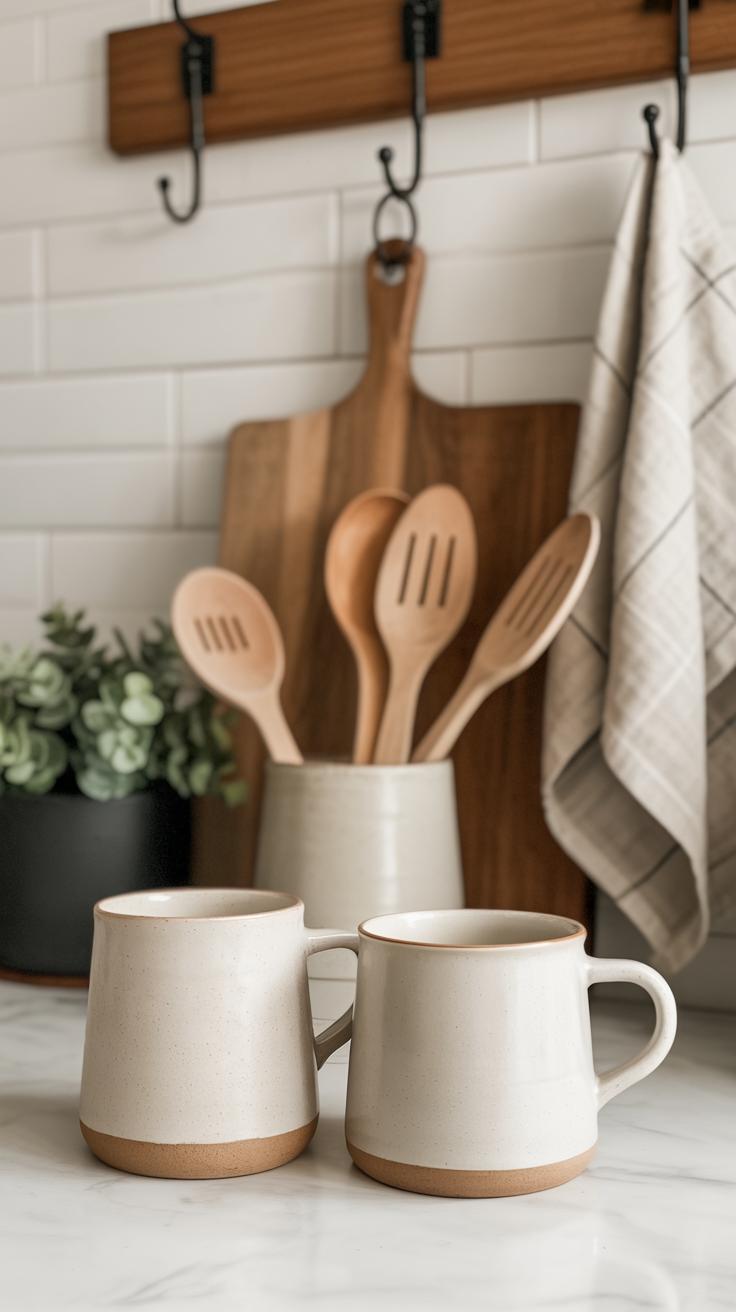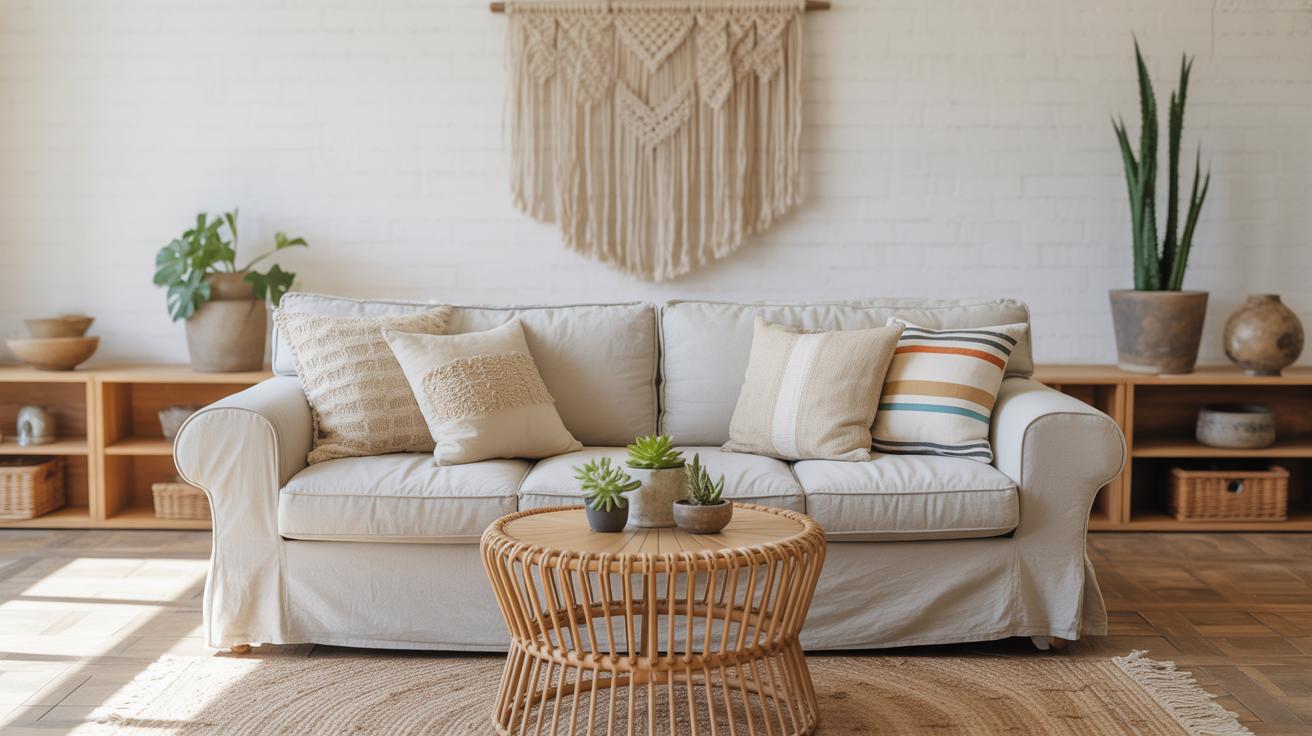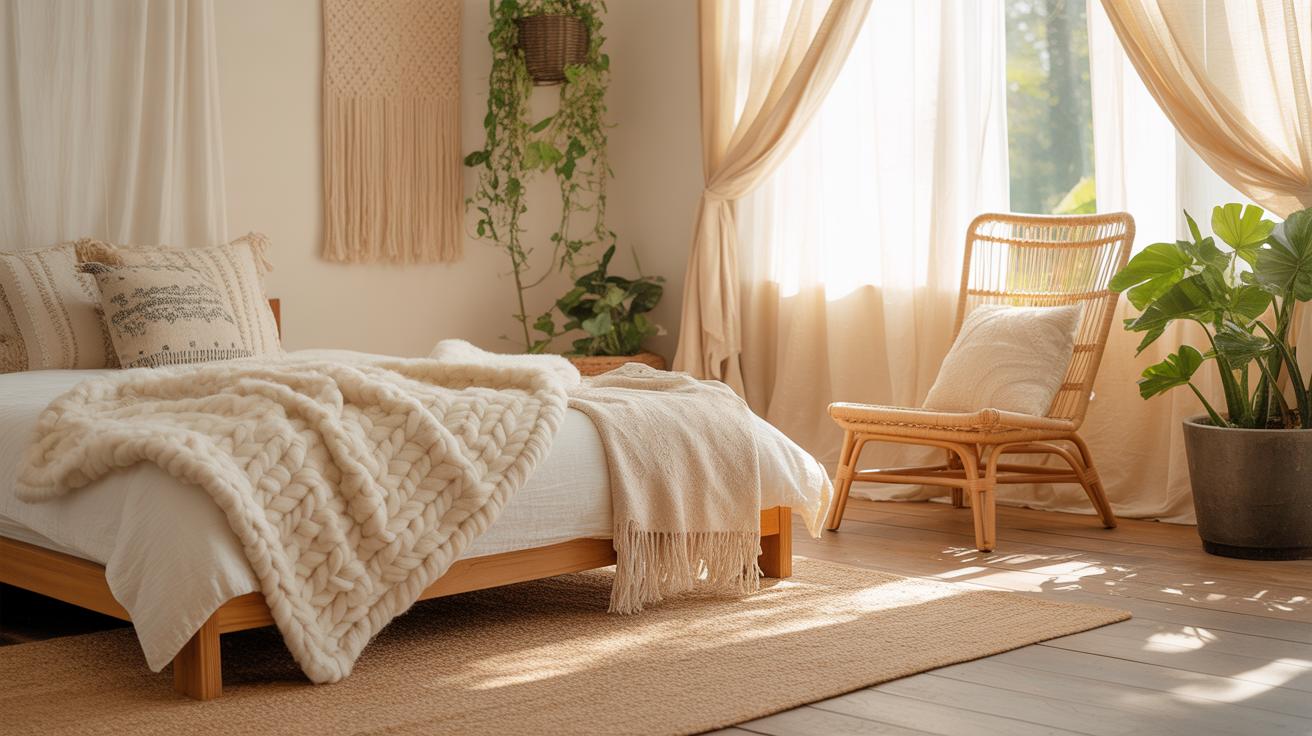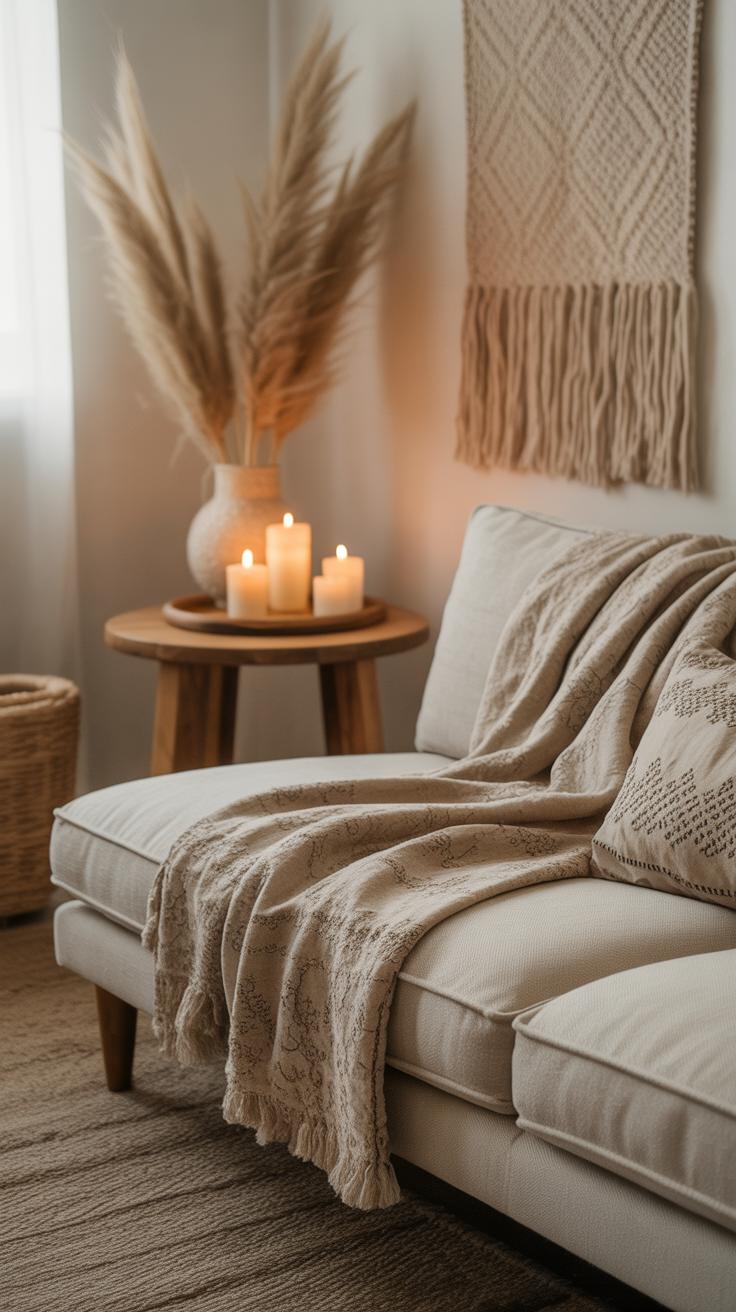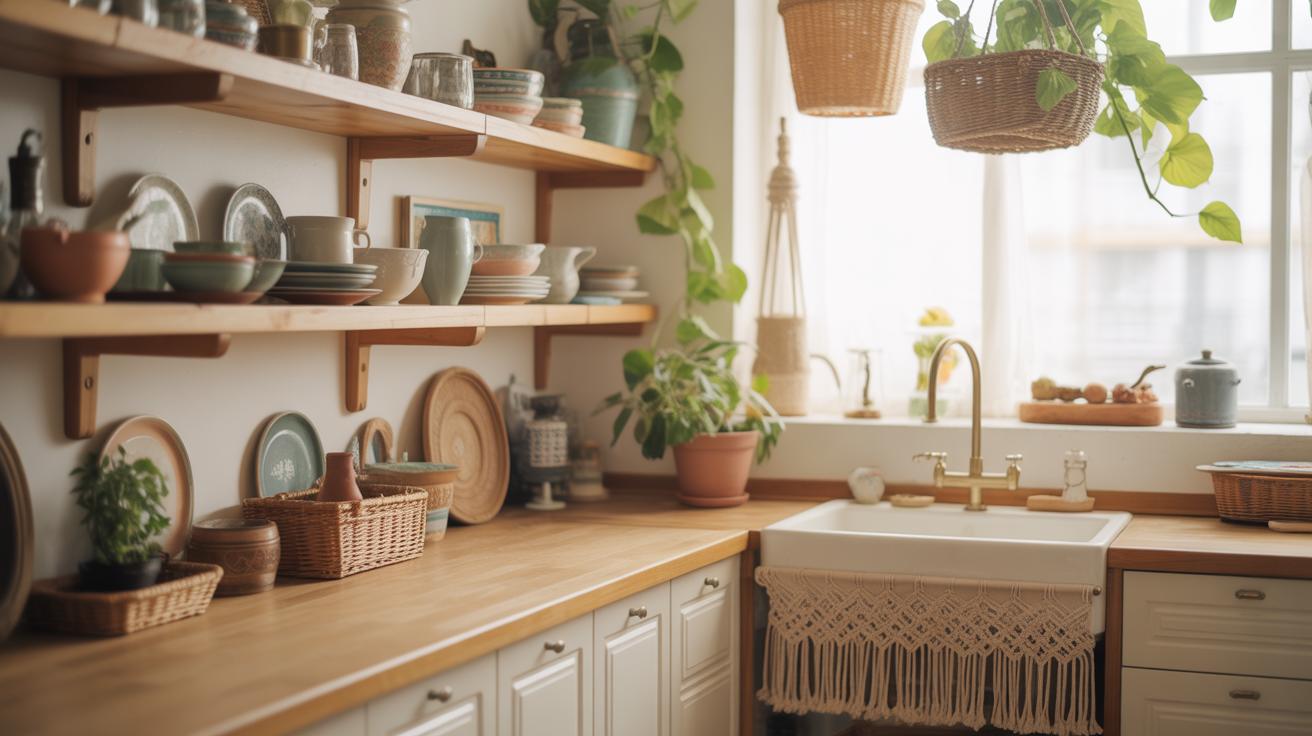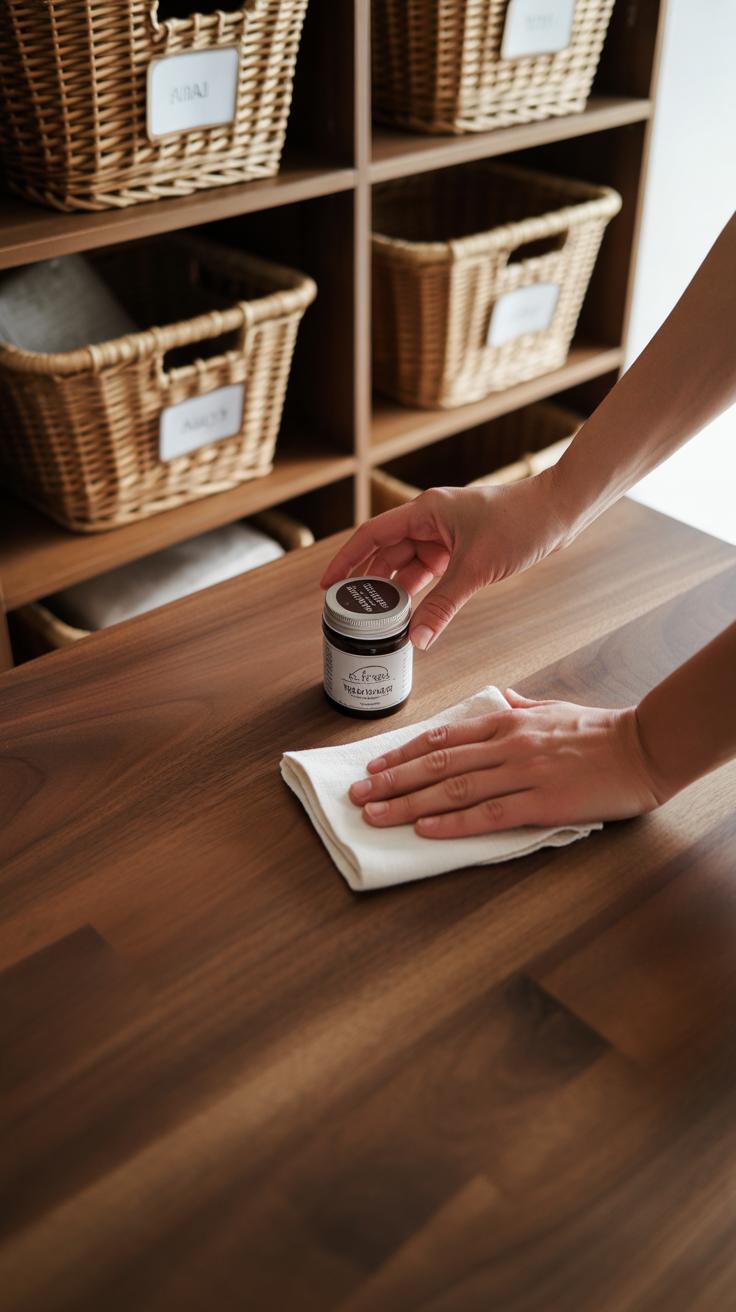Introduction
Embracing the earthy aesthetic means bringing natural elements into your living space. This style uses colors, materials, and textures inspired by nature. It helps create a calm and warm environment. You’ll find inspiration in colors like browns, greens, and soft tans that remind you of the earth.
Natural decor finds are the key to this look. Think wooden furniture, stone accents, and plants. This article explores how you can bring the earthy aesthetic into your home with easy-to-find natural items. We’ll share ideas and tips that are easy to follow and will help you make your space feel more grounded and welcoming.
Understanding the Earthy Aesthetic
The earthy aesthetic is about more than just colors or materials—it’s a way to bring a quiet sort of calm into your space. Imagine tones that feel almost pulled from the ground itself: soft browns, muted greens, gentle beiges. These natural colors don’t overwhelm the senses; rather, they set a relaxed mood. It’s like the room breathes alongside you.
Materials play a big role too. Think wood surfaces with visible grains, rough stone textures, clay pots, woven fibers. These elements add a tactile sense of nature that smooth paints or plastics can’t mimic. The effect is a space that feels warm and welcoming, yet uncluttered.
There’s something grounding about this aesthetic. Maybe it’s the way natural light interacts with wood, or how stone anchors a room visually. It creates an environment that invites you to slow down. Comfort and simplicity come through without trying too hard, making you want to stay.
What Makes the Earthy Style Special
What stands out in the earthy style—at least to me—is its simplicity paired with a genuine focus on nature. It doesn’t rely on flashy design trends or complicated patterns. Instead, it lets natural elements speak for themselves.
Wood, for example, can be a central feature. A wooden coffee table or exposed beams carry a story and make the space feel lived-in, something real. Stone offers a rugged counterpoint, like a fireplace surround or textured wall. Here, imperfections aren’t flaws but character.
Comfort is another key piece. The style favors soft fabrics, warm lighting, and cozy nooks. It’s not formal or sterile; it almost begs you to curl up on a linen sofa or sink into a chair. In these details, the earthy style creates a calming, approachable home environment.
Why People Choose Earthy Decor
There are a few reasons why people might lean toward earthy decor. One, it’s a way to reduce stress. With so much digital noise around us, a natural setting indoors offers relief. It’s easier to breathe, literally and mentally.
Secondly, this style helps create a connection with nature without stepping outside. For those in busy cities or colder climates, that link might be all the nature they get. A plant on a wooden shelf or a stone sculpture can remind you of the outdoors, providing subtle comfort.
Then there’s the undeniable pull of coziness. Earthy spaces don’t feel overly designed—they feel like homes. There’s that sense of security, the invitation to relax after a long day. Maybe you’ve experienced it yourself, where just being in a room makes tension ease.
Choosing Earthy Color Palettes
Picking the right earthy tones for your rooms can feel a bit tricky at first. There’s a whole range of colors that fall under the “earthy” umbrella, and mixing them well takes some experimentation. Don’t rush it—you might want to test small patches on your walls or swap out a few cushions before committing. Earthy colors often include browns, greens, soft neutrals, and maybe some clay or rust hues. Think about the mood you want: warm, cozy vibes lean more toward deep browns and rich clay reds, while calmer, serene spaces suit softer tans and moss greens.
Popular Earthy Colors
Some of the most common earthy colors you’ll see are:
- Warm browns: From chocolate to caramel, these work well on larger furniture pieces or wood accents.
- Moss greens: Great for wall color or textiles, giving a fresh yet grounded feel.
- Clay reds: Perfect for statement elements like a single accent wall or pottery decor.
- Light tans and beiges: Ideal as base colors that balance stronger tones and keep the space feeling open.
I often find people overlook the softer neutrals because they seem boring at first. But they’re actually the glue that holds everything else together, providing calmness without dullness.
How to Mix Earthy Colors
Mixing these tones takes a bit of intuition, but a few simple guidelines help. Try pairing a deep brown with a soft beige to keep the space balanced. Or combine moss green with clay red for a subtle contrast that doesn’t feel overwhelming. It’s tempting to stick to just one or two shades, but introducing a third, lighter color can create depth.
One easy approach is:
- Choose one dominant earthy tone for walls or big furniture.
- Add a secondary color in textiles or smaller pieces.
- Use a light neutral as a backdrop or in accessories to break up darker shades.
Don’t be afraid to try unexpected combinations, either. Mixing green with clay can feel odd on paper, but in practice, it’s surprisingly inviting. And remember, lighting changes everything—sunlight versus artificial light can make colors appear warmer or cooler, so see how your chosen palette shifts throughout the day.
Incorporating Natural Materials
When you bring natural materials like wood, stone, wool, and clay into your space, you invite texture and a grounded sense of interest that synthetic options often miss. These materials don’t just fill a room—they speak quietly of the outdoors, of age, of simplicity, and time passing. You might find yourself wanting to touch surfaces, intrigued by subtle imperfections, or just feeling a calmness you didn’t expect.
Using Wood and Stone
Wood and stone work well in earthy interiors because both have strong ties to nature and bring a certain weight and authenticity. Wood, with its grain and warm tones, can shape everything from the frame of a chair to a sturdy coffee table. Stone introduces a contrasting coolness and solidity—imagine a rough-hewn stone bowl or a sleek marble countertop. These materials don’t just look good; they age with character. Perhaps a reclaimed wood bookshelf or a slate hearth could become the heart of your living space. They offer durability but also invite a story—maybe from where the wood was sourced or how a stone has weathered over decades.
Other Natural Textures
Apart from wood and stone, don’t overlook the value of textiles like wool or linen and materials like clay. Wool throws or rugs add softness and warmth—such tactile layers encourage coziness that feels natural, not overstyled. Linen curtains bring a breezy, imperfect feel through their light wrinkles and subtle weave. Clay pottery, meanwhile, offers an earthy weight and organic shapes. The slight unevenness of handmade pieces can make a room feel more personal. These materials offer subtle contrasts to hard surfaces while maintaining the natural vibe. Which textures might you be drawn to? Sometimes, the smallest additions can shift the whole atmosphere of a room.
Adding Greenery and Plant Decor
Plants do something quiet but powerful to a space, especially when you’re going for an earthy vibe. They bring life that feels right at home among wood and stone textures. You might think you need a green thumb, but some plants actually manage well on neglect, which is a relief for many of us.
Choosing the Right Plants
Simple, fuss-free choices tend to suit natural decor best. Succulents, for instance, can thrive on windowsills with just occasional watering. Snake plants are almost impossible to kill and add height and form without much effort. Ferns, especially smaller types, introduce softness and a bit of wildness that pairs nicely with wooden elements. Each of these plants has its own pace and preference, so it’s a bit about trial and error, but they generally keep the earthy feel intact.
Creative Plant Displays
Displaying plants offers little chances to get creative while keeping things natural. Choosing pots made from clay, terracotta, or wood keeps the aesthetic consistent. Ever tried grouping plants in a corner? It can become a cozy green nook instantly, perfect for a quiet moment with a book, or just to rest your eyes. Hanging planters or shelves with trailing plants add layers without taking floor space. You might find that the arrangement evolves slowly—kind of like the plants themselves—so don’t rush it. Sometimes, the best setups come from a bit of rearranging over time.
Lighting that Complements Earthy Decor
Lighting can quietly shape the entire vibe of a room, especially when you’re working with earthy decor. You’ll want to lean towards warm lighting that brings out the rich browns, greens, and muted tones typical of natural elements. Cool or stark white lights tend to kill that cozy feeling, making the space feel less inviting—at least in my experience.
Warm white or yellow lights tend to blend better with organic materials because they mimic natural light during golden hours. This kind of light softens shadows and makes colors appear deeper and more soothing. Have you noticed how the right warm light can even relax your mood or make late evenings more comfortable?
When it comes to fixtures, materials like wood, rattan, or aged metal play a big role. A rattan pendant lamp or a wooden floor lamp can instantly ground the space, while rustic metal fixtures add a bit of industrial edge without feeling out of place. Lamps with woven shades or elements that reveal natural texture work well because they cast interesting, imperfect patterns that support a lived-in, natural ambiance.
- Choose bulbs around 2700K for that soft, warm glow.
- Look for fixtures made from untreated or lightly finished wood for authenticity.
- Rattan and wicker lampshades add a tactile quality and diffuse light gently.
- Metal fixtures, especially with patina or matte finishes, can complement earthy tones when balanced properly.
Of course, sometimes too much warm light can feel a bit dim or even dull—so layering your lighting with adjustable options can help. Dimmer switches or a combination of table and floor lamps allow you to find the right balance for the moment.
Earthy Decor Finds in Everyday Items
Finding earthy decor doesn’t mean hunting for rare or expensive pieces. Actually, many common home items fit right into that natural vibe without trying too hard. Take woven baskets, for example. They’re everywhere—perfect for storage or as standalone pieces. I used one to hold blankets, and it instantly grounded the space with its rough texture.
Ceramic vases with simple, organic shapes also work well. They don’t need to be flashy. Sometimes, a small, unglazed vase on a windowsill can speak volumes. Natural fiber rugs, like jute or sisal, add warmth and a tactile element beneath your feet, which can be surprisingly comforting.
Decorative Items to Look For
When hunting for natural decor, look for these popular touches that add charm:
- Stone or clay vessels—whether for plants or just decoration
- Wooden bowls or trays with visible grain
- Driftwood or branches artistically arranged
- Handwoven textiles or throws made from cotton or linen
- Plants in uncoated, terracotta pots that age beautifully over time
Even small objects bring detail—a little wooden sculpture, or a bunch of dried flowers in a clear vase, can lend that earthy ambiance.
Budget-Friendly Earthy Finds
You don’t have to splurge to get natural decor that feels authentic. Thrift shops and flea markets often have hidden gems waiting. I once found a cracked, handmade ceramic pitcher for next to nothing that now serves as a statement piece.
Another option is DIY—even if you’re not the most crafty person. Wrapping simple glass jars with twine or creating wall hangings with branches and fabric scraps can bring earthiness into your home with very little cost. Just looking around with an Earthy eye turns many everyday objects into something worth keeping.
Creating a Cozy Earthy Living Space
Making a living room feel both cozy and earthy means paying close attention to how you place your furniture and use color and texture. Start with pieces made from natural materials: think wooden coffee tables, leather or linen sofas, and rattan chairs. Don’t just shove everything against the walls; pulling furniture into gentle, conversational groupings invites comfort and closeness. It’s surprising how a simple shift like angling a chair or leaving some open floor space can make the room breathe in a natural way.
Colors play a quiet but crucial role. Stick with warm, muted tones—soft browns, muted greens, ochres—but don’t hesitate to layer in some deeper shades like rust or deep clay for depth. You might hesitate to go too dark in a small space, but pairing these with lighter walls or plenty of natural light balances it out.
Textiles bring texture and warmth that really sell the vibe. Layer rugs woven from jute or wool on top of hardwood floors. Scatter cushions and throws in earthy hues, but vary the materials: think linen cushions next to knitted wool throws, or a chunky knit tossed over an arm. It’s in this little messy layering, where nothing is perfectly matched, that the coziness unfolds.
So why not look at your space and ask: Does it invite lingering? Does it feel like a place to relax without fuss? If not, maybe adjusting your furniture layout or adding a thick rug can begin to change that feeling. You don’t need to overhaul everything at once, just a few thoughtful touches here and there go a long way.
Maintaining the Earthy Look Over Time
Caring for Natural Materials
Wood surfaces and furniture require gentle care to stay looking natural and warm. A soft cloth and mild soap usually do the trick, but be cautious not to soak wood—it can warp or stain. Every so often, rubbing in a small amount of natural oil, like linseed or tung, helps maintain the wood’s texture and prevents drying. Stone elements, like countertops or decor, often collect dust and stubborn stains. Use a damp cloth with a little baking soda or a stone-safe cleaner, but avoid anything too acidic that might etch the surface.
Textiles such as wool or linen need a bit of patience. Frequent vacuuming keeps dust at bay, and spot treating spills right away prevents stains from setting. Washing in gentle cycles or even hand-washing can preserve the fibers. Sometimes, it feels like these pieces demand more attention than other decor. Still, the effort pays off—they develop charm over time rather than just wear out.
Nurturing Your Greenery
Plants add life but also ask for some routine. Water needs vary significantly—succulents don’t like much, but ferns often prefer consistently moist soil. Finding the right balance can take a few tries. Think about light, too. While many greenery types appreciate bright, indirect sun, some need lower light levels, which means placement really matters.
Fertilizing monthly during the growing season keeps plants from looking tired, but it’s easy to overdo. Watch the leaves; yellowing or browning hints at something off, maybe too much water or not enough light. Repotting every year or two encourages fresh growth but can be a hassle when you’re busy. Still, when thriving plants fill your space, it’s a clear sign the extra steps are worthwhile.
What are your priorities? If you want ever-changing greenery, maybe mix easy-care plants with ones needing more attention. That way, you keep both a lively and manageable environment that lasts.
Conclusions
Going for an earthy aesthetic invites you to make your home feel close to nature. Using natural materials and earth colors can change the mood of your space. It can make your home feel simpler and more relaxing. By choosing items like wood, stone, and plants, you connect your space with the outdoors.
Your home is your place to feel comfortable. Adding natural decor helps you do just that. It’s not about fancy or expensive things but about small choices that bring a big change. Start with little touches and watch how your space comes alive with the earthy aesthetic.

